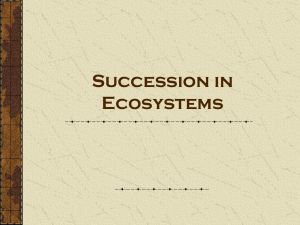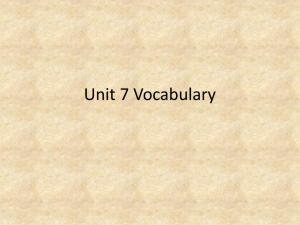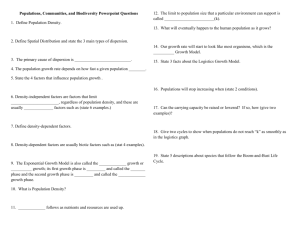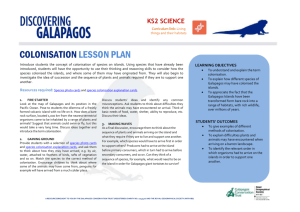1A1 Colonisation MSWord Lesson Plan KS3 Science
advertisement
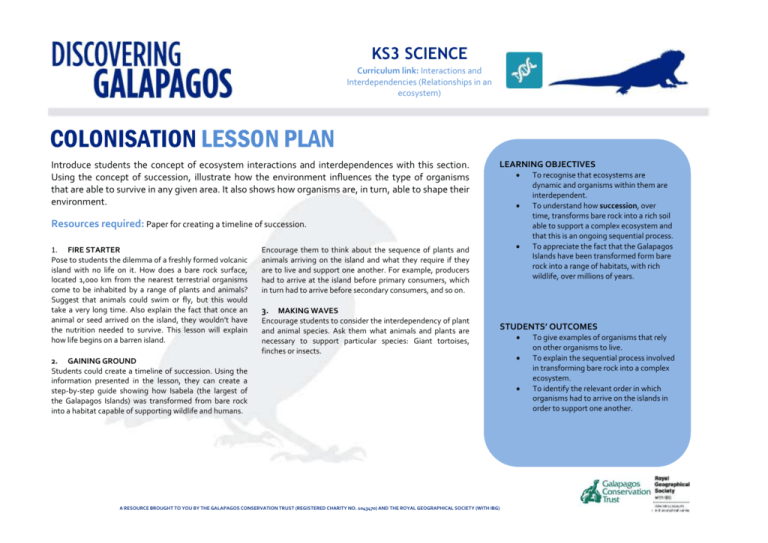
KS3 SCIENCE Curriculum link: Interactions and Interdependencies (Relationships in an ecosystem) COLONISATION LESSON PLAN Introduce students the concept of ecosystem interactions and interdependences with this section. Using the concept of succession, illustrate how the environment influences the type of organisms that are able to survive in any given area. It also shows how organisms are, in turn, able to shape their environment. LEARNING OBJECTIVES Resources required: Paper for creating a timeline of succession. 1. FIRE STARTER Pose to students the dilemma of a freshly formed volcanic island with no life on it. How does a bare rock surface, located 1,000 km from the nearest terrestrial organisms come to be inhabited by a range of plants and animals? Suggest that animals could swim or fly, but this would take a very long time. Also explain the fact that once an animal or seed arrived on the island, they wouldn’t have the nutrition needed to survive. This lesson will explain how life begins on a barren island. Encourage them to think about the sequence of plants and animals arriving on the island and what they require if they are to live and support one another. For example, producers had to arrive at the island before primary consumers, which in turn had to arrive before secondary consumers, and so on. To recognise that ecosystems are dynamic and organisms within them are interdependent. To understand how succession, over time, transforms bare rock into a rich soil able to support a complex ecosystem and that this is an ongoing sequential process. To appreciate the fact that the Galapagos Islands have been transformed form bare rock into a range of habitats, with rich wildlife, over millions of years. 3. MAKING WAVES Encourage students to consider the interdependency of plant and animal species. Ask them what animals and plants are necessary to support particular species: Giant tortoises, finches or insects. 2. GAINING GROUND Students could create a timeline of succession. Using the information presented in the lesson, they can create a step-by-step guide showing how Isabela (the largest of the Galapagos Islands) was transformed from bare rock into a habitat capable of supporting wildlife and humans. A RESOURCE BROUGHT TO YOU BY THE GALAPAGOS CONSERVATION TRUST (REGISTERED CHARITY NO. 1043470) AND THE ROYAL GEOGRAPHICAL SOCIETY (WITH IBG) STUDENTS’ OUTCOMES To give examples of organisms that rely on other organisms to live. To explain the sequential process involved in transforming bare rock into a complex ecosystem. To identify the relevant order in which organisms had to arrive on the islands in order to support one another.
